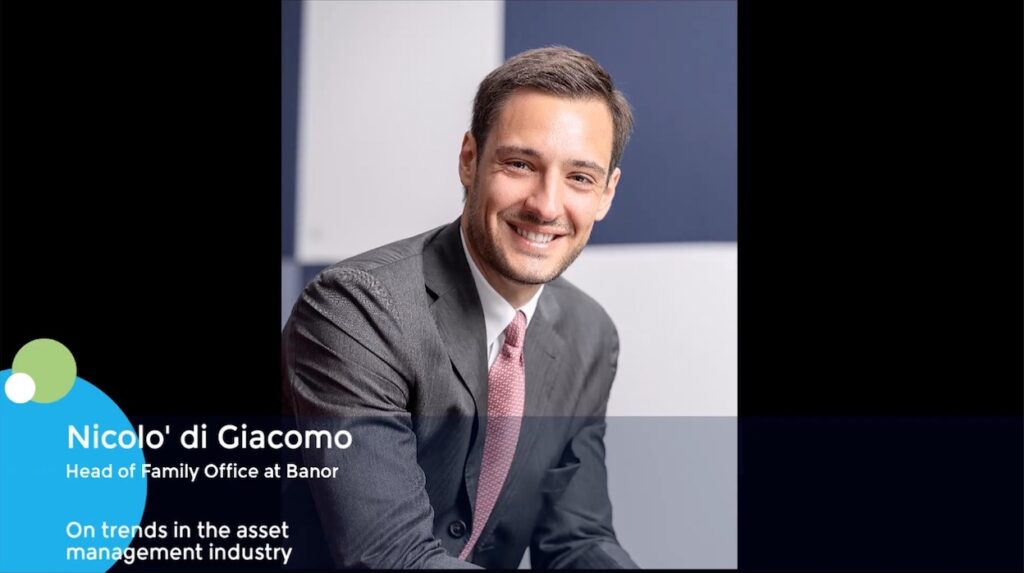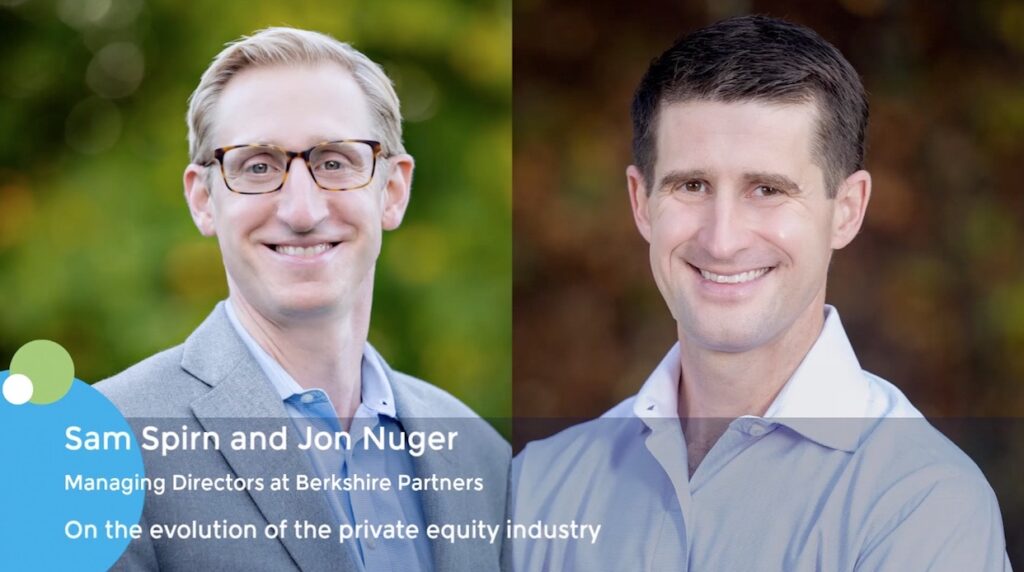Private markets managers step up pursuit of US retirement savings
- Regulators are creating path to 401(k) plans, but access will take time
- Product innovation key to addressing adoption, litigation challenges
- Tie-ups between target date funds, large GPs most likely entry point
For years, Washington State’s public sector employees have quietly enjoyed exposure to private market strategies through their defined contribution (DC) pension plans. It confounds conventional wisdom that DC and private markets don’t mix. Plan fiduciaries have long resisted the temptation to try, not least because of concerns that the higher fees involved will lead to employee litigation.
Defined benefit (DB) plans, where investment risk is borne by the employer, are easier. And that was the starting point for the Washington State Investment Board (WSIB) when constructing the Total Allocation Portfolio (TAP) for DC access. It is a unitized structure that mirrors the state’s DB program.
As of March 2025, more than half of TAP’s assets were deployed in alternatives, with just under 30% in private equity. In the rest of the US-based DC world, estimated to be worth over USD 12tn in total, private markets strategies account for a sliver of overall portfolios. That includes the approximately USD 9tn tied up in corporate 401(k) plans.
TAP has delivered a 10-year annualized net return of 8.93%, above the 6.84% benchmark. It sits alongside other pioneering plans as a reminder of what’s possible when private markets are integrated into DC portfolios. Following an executive order intended to facilitate 401(k) access to private markets, employees in other states might be asking how they can get a taste of this alpha.
“Nothing prevents a plan sponsor from using private equity today,” said Jonathan Epstein, president of DCALTA, a non-profit organization that promotes the benefits of including alternatives in DC plans.
“Some employers – especially large corporates – have been doing it, while states like Washington and Oregon have had private markets in their DC plans for over a decade. They’ve done it by leveraging the investment expertise from their pension plans.”
Industry participants offer versions of a future in which trillions of dollars flow from DC plans into private markets, perhaps not only improving overall returns for employees but also transforming the fundraising landscape. This is happening, at a smaller scale, in some overseas markets.
“If you look at other non-US DC plan designs as potential models, such as the Australian superannuation system, long-term allocations to a broad set of alternative investments might approach 15%-20%, which would scale the US opportunity for alts at around USD 2tn,” said Drew Carrington, a managing director for alternatives in retirement portfolios at iCapital.
Getting there will take time. Outside of customized solutions for specific employers, target date funds (TDFs) – diversified, professionally managed portfolios – are the primary channel through which DC capital flows into alternatives. However, only a handful of them currently offer this kind of exposure, and it is largely restricted to real estate.
According to a DC executive at one investment firm who requested anonymity, just USD 115bn is allocated to these funds. The overall TDF share of the DC market is USD 4tn. “It sounds like a rounding error,” the executive said.
Greasing the wheels
Major asset managers have long considered 401(k) plans to be the Holy Grail for private markets. TDFs have become the most popular way to pursue it, leading to a wave of product innovation.
This year alone, State Street has launched its Target Retirement IndexPlus Strategy, a series of funds with 10% exposure to private assets managed by Apollo Global Management, while Capital Group and KKR have rolled out credit strategies using an interval fund structure.
The executive order, issued by the White House on 7 August, has provided a welcome regulatory tailwind. Specifically, it directed the Department of Labor (DoL) to revisit guidance on DC plans using alternative investments. The DoL’s 2021 supplemental statement, which walked back a 2020 information letter stating it was not in itself a rule violation for DB plans to offer access to alternatives, was duly withdrawn.
The speed of the response was striking. “It normally takes a while for them to take action,” said Josh Lichtenstein, a partner at Ropes & Gray. “Here it did within five days, which speaks to the degree of importance.”
Moreover, the executive order gave the DoL 180 days to reassess its interpretation of fiduciary duties under the Employee Retirement Income Security Act (ERISA) regarding alternative assets in DC plans. New rules are expected outlining how fiduciaries can prudently offer asset allocation options for alternatives, while minimizing litigation risk. The executive order referred to “appropriately calibrated safe harbors.”
Observers are also watching the Securities & Exchange Commission (SEC), anticipating a loosening of accredited investor qualification criteria for private funds. At present, participation is restricted to those with a net worth of at least USD 1m excluding their primary residence or annual income of more than USD 200,000 individually or USD 300,000 jointly for the preceding two years. TDFs already benefit from relief from these rules, however.
Meanwhile, at the DoL, the White House’s nominee for assistant secretary of labor, Daniel Aronowitz, was confirmed on 18 September. He will head the Employee Benefits Security Administration, which is tasked with overseeing ERISA matters.
As leadership at the DoL takes shape, dialogue with stakeholders – from recordkeepers to plan advisors – is expected to see fresh impetus. Plan sponsors will play a central role in what happens next, according to iCapital’s Carrington. This is especially true of those overseeing “mega-plans” with over USD 1bn in assets, which collectively account for more than half of all 401(k) holdings.
“From here, the focus will be heavily on fiduciaries overseeing 401(k) plans for corporations and organizations across the US,” added DCALTA’s Epstein. “Their comfort level with the executive order and subsequent DoL guidance will be key.”
Litigation headwinds?
For plan sponsors, getting comfortable largely means being confident they won’t be sued.
This is not a glib observation. Since the mid-2000s, a legal sword of Damocles has hung over fiduciaries in the form of surging ERISA litigation over excessive fees. They are alleged to have failed to ensure reasonable costs for recordkeeping and investment services. Litigation peaked in 2020.
The Committee on Investment of Employee Benefit Assets (CIEBA) represents the CIOs and in-house fiduciaries of DC and DB plans at 120 of America’s largest corporations and organizations. While most members support private markets – around 28% of DB capital is invested in alternatives – litigation risk has made them cautious in the DC space.
“I don’t think anyone is sitting at their investment committee table wondering whether it’s legal to offer or use alternatives,” said Dennis Simmons, CIEBA’s executive director. “The real concern is that the merits of alternatives aren’t being carefully considered because firms are hesitant to do anything. This is largely a result of 15-20 years of what can only be described as frivolous, opportunistic litigation.”
A recent court ruling may offer a turning point. In May, the Ninth Circuit Court of Appeals dismissed a lawsuit alleging that the fiduciaries of Intel Corporation’s 401(k) had breached the duty of prudence by including hedge fund and PE investments in internally developed TDFs, which charged higher fees. Intel prevailed by demonstrating that it had conducted appropriate benchmarking before launching the TDFs.
Sherrie Boutwell, a partner at specialist ERISA law firm Boutwell Fay, argues that the Intel ruling reinforces the idea that investing in alternatives is not inherently problematic for plan fiduciaries.
“We have statutes, regulations, and years of case law, especially around what it means to be a prudent fiduciary under ERISA,” she said. “Given the Intel decision, especially in the Ninth Circuit, there’s now good precedent saying you need more than vague allegations of conflict of interest.”
Boutwell, who represents employers, notes that in addition to prudence, the main concerns around alternatives remain structural, specifically liquidity and valuations. Alongside higher fees, these have long been viewed as the biggest hurdles to DC adoption of private markets.
Product innovation could offer the solution to both adoption hurdles and litigation risks. In addition to State Street-Apollo and Capital Group-KKR tie-ups, Wellington Management, Vanguard, and Blackstone plan to develop multi-asset investment solutions that integrate public and private markets as well as active and index strategies.
Announcing the initiative in April, they said the goal was to “broaden access to sophisticated multi-asset portfolios ordinarily available to the largest global institutions.” This can be read as reinterpreting the DB alternatives experience for a DC world. Further collaborations between investment managers and TDF providers are likely as private markets become embedded in mainstream retirement products.
“Overall, the best way to increase adoption of the products is to have more products,” said Ropes & Gray’s Lichtenstein. “There’s also a duty of prudence here; you can run a request for proposal (RFP), look at different products, and whittle it down.”
Evergreen options
A wave of evergreen, semi-liquid funds is already addressing structural challenges faced by individual investors, offering diversified access to private markets with periodic liquidity. As of 3Q24, 351 of these vehicles had together raised USD 318.1bn in the US alone, according to Morgan Stanley.
StepStone launched its private wealth unit in July 2019, and its first evergreen vehicle followed nine months later. Now, the firm manages over USD 11bn across five vehicles. It raises around USD 500m per month, with an average ticket size of USD 100,000, for evergreens that offer exposure to private equity, venture capital, private credit, and infrastructure.
Bob Long, StepStone Private Wealth’s CEO, claims these products can address valuation and fee concerns. “We provide daily valuations on USD 6bn-USD 7bn of private assets,” he explained.
Meanwhile, although the Investment Company Act of 1940, under which many evergreen funds are registered, requires uniform fees for all investors, customization is possible with private funds and separate accounts. DC and 401(k)-related products typically fall into the latter scenario. “We and others regularly customize fees based on the situation,” added Long.
Evergreen vehicles facilitate periodic redemptions – typically capped at a certain percentage of total assets per quarter – by holding a portion of the portfolio in liquid assets. As access expands to the 401(k) market, Long argues that liquidity should not be a concern. TDFs, the preferred mode of access, inherently feature this kind of liquidity sleeve because their largest allocation is to public equities.
“Part of the reason for structures that embed alternative investments, such as a TDF that holds a collective investment trust (CIT) that holds alternative investments, is to align the liquidity profile of the underlying investment more closely with the traditional DC plan liquidity needs,” added iCapital’s Carrington.
TDFs are expected to maintain modest exposure to private markets, perhaps topping out at around 15%, with the rest invested in public markets. Industry participants broadly endorse this “walk before you run” approach, not wanting to see a surge in any particular direction.
“These are professionally managed pools with established asset allocations. You could add a conservative allocation to private equity and allow the manager to rebalance periodically,” said Steve Brennan, a managing director and co-head of evergreen portfolio management at Hamilton Lane.
The firm has built an evergreen private markets platform with over USD 13bn in assets under management, offering a range of private equity strategies as well as private credit and private infrastructure. Brennan said that solutions will be made available to 401(k) plans once the market is ready.
Mid-market access
From evergreen vehicles to TDF tie-ups, most of the action has been at the large end of the spectrum. Recent earnings calls of leading listed alternative investment managers have featured plentiful references to the size of the 401(k) opportunity.
It raises the question of what these developments mean for GPs elsewhere on the spectrum, and whether they have the resources to tap nascent fundraising channels. Technology may serve as an enabler, which means there is a logical product expansion angle for fintech players like iCapital that already build platforms for mid-market sponsors.
“There’s nothing stopping them from creating a CIT based on a strategy that includes multiple managers,” said DCALTA’s Epstein. “That would open access to sectors that might otherwise be overlooked and allow smaller managers to be part of the conversation.”
Others are targeting solutions beyond TDFs and CITs. Alto, for example, provides a so-called self-directed individual retirement account (IRA) platform that aims to connect individual investors with private markets managers. Eric Satz, the firm’s CEO, pointed to strong demand from sponsors with AUMs in the USD 200m to USD 5bn range.
“Some are already trying to take advantage of it,” he said. “Within the next two to three years, I expect every one of them will be looking to raise money from the retail marketplace via online platforms.”
Alto and its peers are exploring the possibility of self-directed brokerage account windows within 401(k) plans that would enable participants to invest outside of the standard options. Such tools already exist for public market investments. Once extended into alternatives, they could become another access point for mid-market funds.
“There’s no single way to approach this,” said Vadim Avdeychik, a partner in Debevoise & Plimpton’s investment management group. “If you’re a large sponsor, you might build everything internally, but there are also opportunities for middle market sponsors to partner with third parties to bring products into the DC space.”
Future state
Should mid-market managers participate in the 401(k) channel, the broader implications for private markets fundraising could be profound. Even a modest reallocation of capital from DC plans could represent hundreds of billions to trillions in net new flows into alternatives over time, Brookfield Asset Management noted in its 2Q25 earnings call.
“The retirement channel could eventually become as significant as traditional institutional sources, fundamentally changing how private markets think about fundraising and investor relations,” said Mitch Caplan, CEO of Yieldstreet, another provider of a fintech platform that enables access to alternatives.
Longer-term, Roger Vincent, founder and CIO of Summation Capital, an outsourced PE investment manager that serves LPs, envisions the emergence of three distinct equity markets: public, private, and semi-liquid, which he calls quasi-equity. Each would have its own liquidity and return profile, and all would be widely accessible, thanks to the combined effects of regulatory and technological change.
This evolution could feasibly transform liquidity dynamics as well, with retail capital presenting sponsors with a new exit channel. The danger, highlighted by Vincent, is that the semi-liquid market becomes the buyer of last resort – assets that need to be exited and no one else wants are passed on to arguably the least well-informed class of investor.
It underscores the importance of strong fiduciaries for DC plans and, at the manager level, careful utilization of different pools of capital. Some listed sponsors are already emphasizing strategic alignment, with Brookfield recently telling Mergermarket that its soon-to-launch evergreen private equity platform would only participate in investments alongside its flagship buyout funds.
Conversely, could the rise of the 401(k) channel crowd out traditional LPs as sponsors favor more flexible and perhaps fee-accretive sources of capital? Caplan gives this notion short shrift, pointing to Australia’s USD 2.7tn superannuation system, in which roughly 90% of assets are in DC plans, as a clue to the future state of private markets.
“They became major global players without pushing out other institutional investors,” he said. “Instead, they often co-invest alongside traditional pension funds and sovereign wealth funds.”











